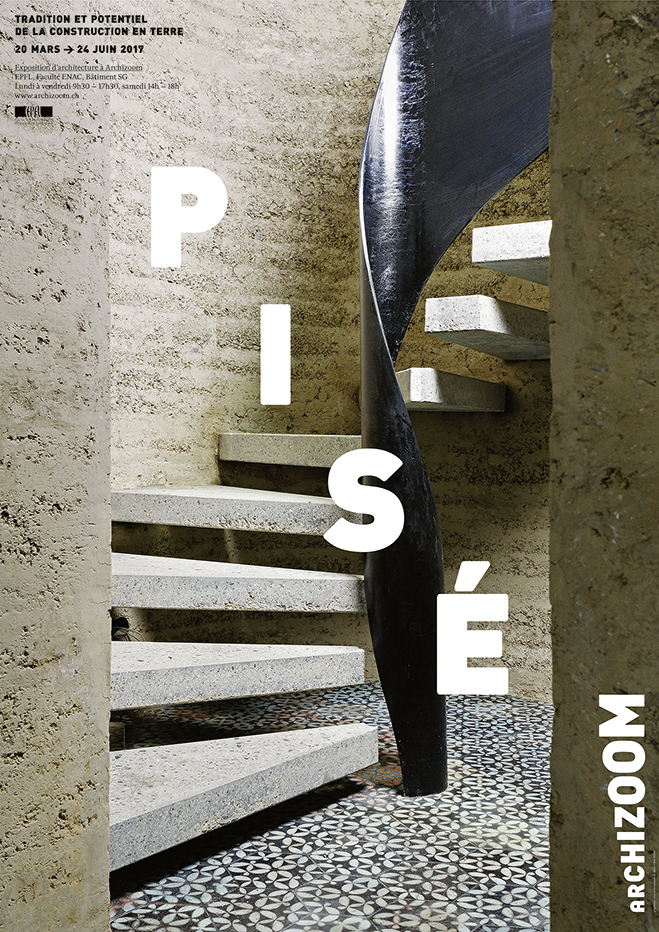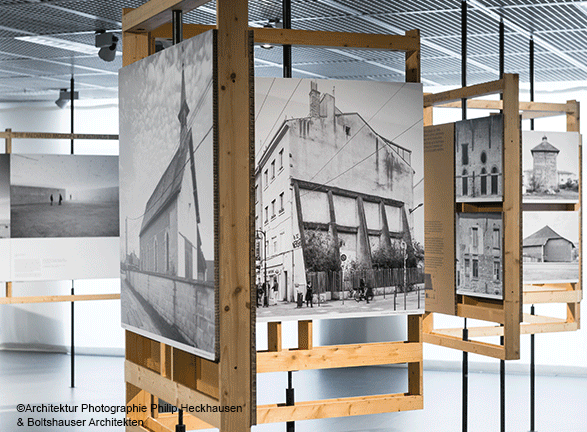
March 20 – June 24, 2017
LECTURE SERIES
March 20, 2017
Opening lecture
Roger Boltshauser
guest professor AR, Zürich
March 28, 2017
Dominique Gauzin-Müller
architect, writer, Stuttgart
April 3, 2017
Martin Rauch
entrepreneur spécialiste du pisé, Schlins, Autriche
April 4, 2017
Guillaume Habert
material engineer, professor ETH Zürich
followed by a prensetation of terrabloc and a debate with the EPFL students in architecture and engineering, andPierre Frey, Corentin Fivet, Roger Boltshauser
May 9, 2017
Laetitia Fontaine
material engineer Laboratoire CRAterre – AE&CC – ENSA Grenoble
directrice du centre de recherche et d’expérimentation amàco (atelier matières à construire)
Collateral event:
March 31 & April 1, 2017
L’art de bâtir la terre
Workshops and conferences in Geneva, Pavillon Sicli. www.artdebatir.ch
Organised by the Office du patrimoine et des sites du Canton de Genève
This construction technique, also known as Pisé, has a history of over 2000 years in Europe. Hannibal is said to have erected his defensive buildings using this technique on his expeditions. In the Rhônes Alpes region rammed earth buildings experienced their first golden age with the rapid growth of cities beginning in the middle of the 16th century. A second active building era followed in the 19th century in the age of the grand rural exodus and the housing shortages resulting from it. The linen trade brought with it the knowledge of rammed earth from France to Switzerland. In eastern Switzerland, various Pisé buildings were erected beginning in the 17th century.
This exhibition offers the opportunity to become better informed about earth as a building material. The properties of the material will be presented and its physical presence can be experienced and felt first hand. We will demonstrate the material’s components and their processing, document currently realised earthen buildings and dare to project a view into the future. We are especially interested in the potential of rammed earth industrial prefabrication, which would make the production process more efficient and could smooth the way for new design perspectives. With the realisation of the Ricola Herb Center by Herzog & de Meuron, rammed earth pioneer Martin Rauch has shown the potential for prefabrication on a completely new scale. Other projects of that magnitude are soon to follow, like the “Ozeanium” in Basel. At EPFL, we examined all possibilities of structurally- and energy-optimized earth-hybrid building systems. The focus of the Studio Boltshauser was on questions addressing the new proportions, the structure, as well as an innovative architectural expression in these projects.
Exhibition produced by ARCHIZOOM
CURATORS
Roger Boltshauser
Marlène Witry
COLLABORATORS
Janina Flückiger (conception pisé Suisse)
Clemens Quirin, Lehm Ton Erde (conception domaine matériaux)
PARTNERS
Erne Holzbau AG (coffrages en bois)
Martin Rauch, Lehm Ton Erde (matériaux et tableau en terre crue)
Timur Ersen (murs en terre crue)
GRAPHIC DESIGN
Büro 146. Maike Hamacher, Valentin Hindermann, Madeleine Stahel, Zurich
Mit Tiziana Artemisio
PHOTOGRAPY
Philip Heckhausen (photographie pisé Suisse, pisé France)
Noémie Allenbach Tsu-Shin (photographie travaux d’étudiants)
Sébastien Friess (photographie travaux d’étudiants)
TECHNIC PROOFREADING
Laura Marcheggiano (FR/EN)
Exhibition views

Embed of video is only possible from Mediaspace, Vimeo or Youtube